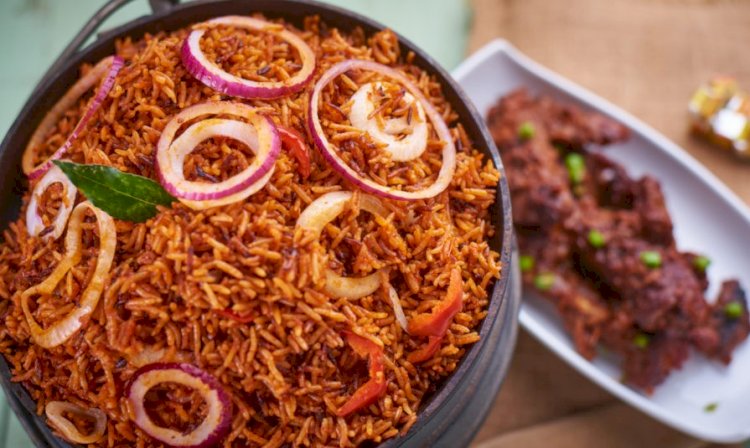#EndSARS protests increased cost of cooking jollof rice: Report
The average cost of making a pot of jollof rice, a highly-rated delicacy, rose by 7.8 per cent between March 2020 and March 2021.

The #EndSARS movement is a factor responsible for a 7.8 per cent increase in the cost of cooking jollof rice, claims a survey.
In its first-quarter 2021 Jollof Index, SB Morgen, a strategic intelligence analysis firm, said the average cost of making a pot of jollof rice, a highly-rated delicacy, rose by 7.8 per cent between March 2020 and March 2021.
Findings carried out in the six geo-political zones by SBM Intelligence indicated that farmers-herdsmen clashes, bad weather conditions, decreasing agricultural land due to urbanisation are contributing factors.
The #EndSARS protests against police brutality and the government’s response “brought the main consumer markets of Lagos and Abuja to a standstill in October 2020, disrupted agricultural supply chains and the movement of people and goods, piling more pressure on food prices.”
According to the survey, other factors are the COVID-19 pandemic, border closure, rising exchange rate, increased tariffs on electricity and fuel are a combination of internal and external factors that have driven up food prices.
The report explained that despite the re-opening of borders in December last year, the cost of items remained high for the majority who buy from retailers. Some ingredients produced locally witnessed a reduction due to attacks on farmers, with the execution of about 110 rice farmers in Borno in November 2020.
“Compounding this bleak situation is the high rates of unemployment,” the SBM Intelligence said while citing an increase in the unemployment rate, which stood at 33.3 per cent in the fourth quarter of 2020.
“High food prices in the face of dwindling income means that affordability becomes a problem,” it said, as it highlighted that unemployment reduced Nigerians’ ability to work for food.
According to the findings, the average cost of making a pot of jollof rice in Nigeria increased to N7,400 from N7,167 in the last quarter, with the costliest in Wuse and least costly at Awka.
“In all the markets surveyed, the cost of making a pot of jollof rice increased in Awka, Calabar Municipal Market, Mbakpa, Onitsha, Port Harcourt and Trade Fair, while Balogun, Bauchi, Bodija, Dugbe, Kano, Nyanya and Wuse experienced a slight decrease,” SBM said.
It, however, attributed poor decision-making of the Nigerian government regarding food scarcity and insecurity, based on the border closure policy, forex restriction for importation, and the effects of fluctuating oil prices, matching some of the causes of the worlds’ greatest famines.
According to the survey, poor leadership is “worrisome” because food production will “need to grow by 70% to feed the world’s population by 2050, and this includes countries with resilient food systems. Some countries are as yet unable to provide sufficient food for their population – Nigeria inclusive.”
Despite the government’s effort to address hikes in food prices through food production, the survey said the challenges persist.
It said this was due to the policymakers’ “difficulty in ensuring loan repayments in certain northern states, while some southern states, chiefly in the South-South, have accused Abuja of failing to provide loans to their farmers.”
It further said, “a lot of policy thinking has focused on production to the detriment of upgrading the post-production ecosystem,” adding that “the country’s significant political, social and economic challenges are showing up in the shrinking, wilting pockets of Nigerian households.”
A recent report released by the National Bureau of Statistics indicated that the food inflation rate increased to 21.79 per cent in February 2021, the highest rate recorded in Nigeria since October 2005.
According to the NBS, the surge results from hikes recorded in the prices of bread, cereals, potatoes, yams, and other meat.
It said food products, fruits, oil, and fats, vegetables, and fish also contributed to the recorded spike in the food inflation rate.

















